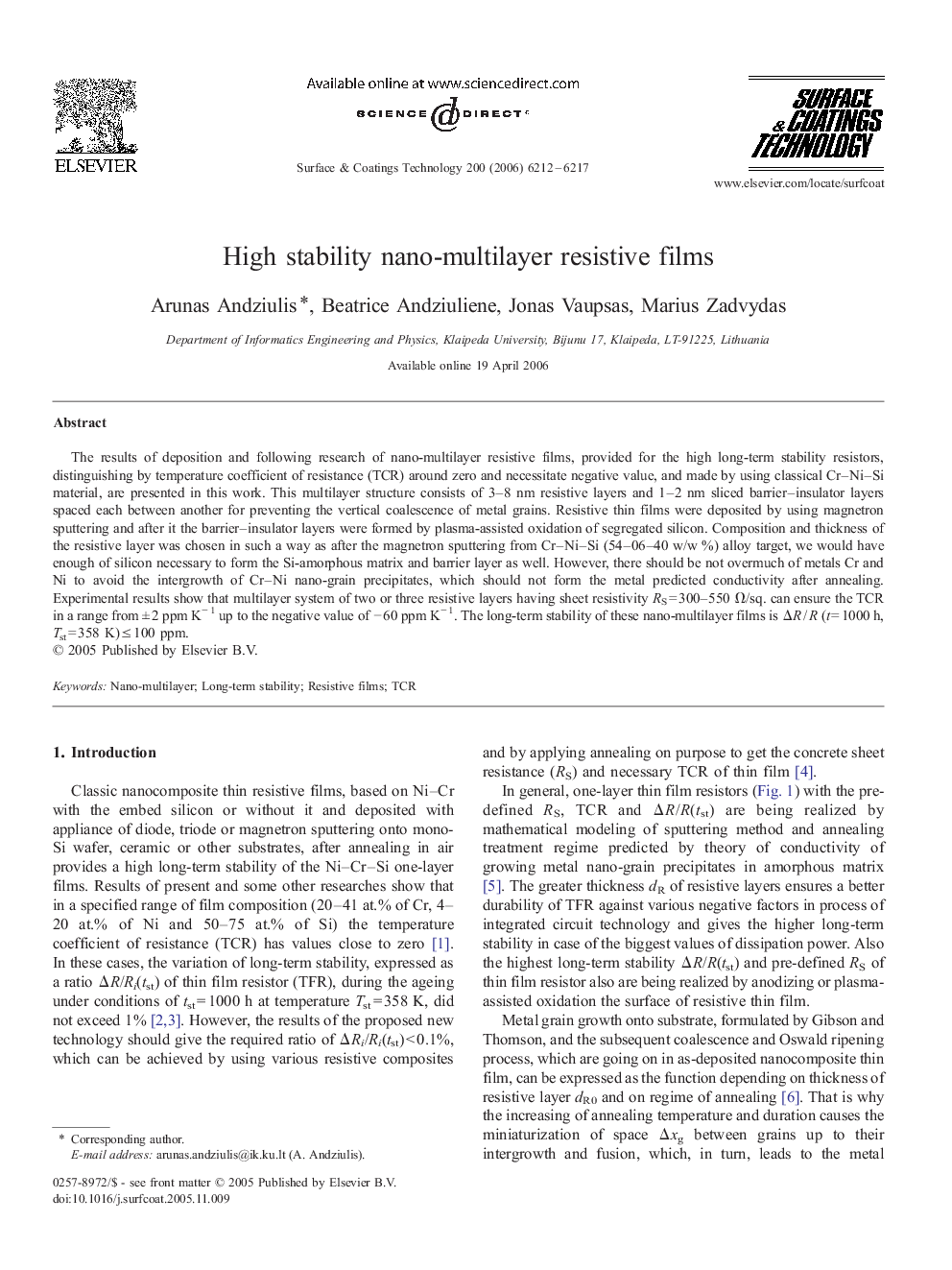| Article ID | Journal | Published Year | Pages | File Type |
|---|---|---|---|---|
| 1661892 | Surface and Coatings Technology | 2006 | 6 Pages |
The results of deposition and following research of nano-multilayer resistive films, provided for the high long-term stability resistors, distinguishing by temperature coefficient of resistance (TCR) around zero and necessitate negative value, and made by using classical Cr–Ni–Si material, are presented in this work. This multilayer structure consists of 3–8 nm resistive layers and 1–2 nm sliced barrier–insulator layers spaced each between another for preventing the vertical coalescence of metal grains. Resistive thin films were deposited by using magnetron sputtering and after it the barrier–insulator layers were formed by plasma-assisted oxidation of segregated silicon. Composition and thickness of the resistive layer was chosen in such a way as after the magnetron sputtering from Cr–Ni–Si (54–06–40 w/w %) alloy target, we would have enough of silicon necessary to form the Si-amorphous matrix and barrier layer as well. However, there should be not overmuch of metals Cr and Ni to avoid the intergrowth of Cr–Ni nano-grain precipitates, which should not form the metal predicted conductivity after annealing. Experimental results show that multilayer system of two or three resistive layers having sheet resistivity RS = 300–550 Ω/sq. can ensure the TCR in a range from ± 2 ppm K− 1 up to the negative value of − 60 ppm K− 1. The long-term stability of these nano-multilayer films is ΔR / R (t = 1000 h, Tst = 358 K) ≤ 100 ppm.
